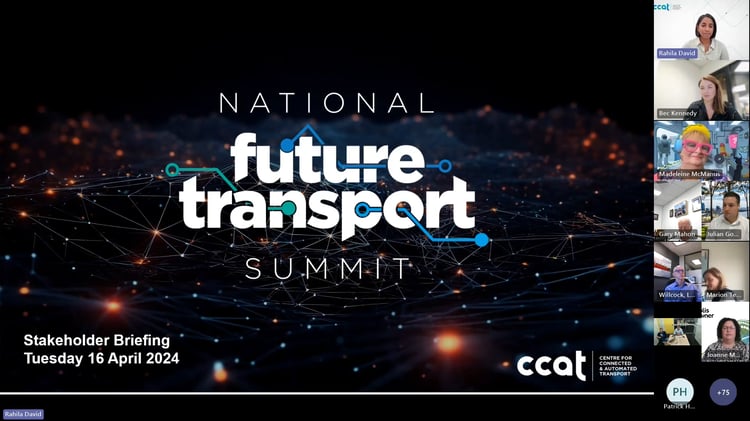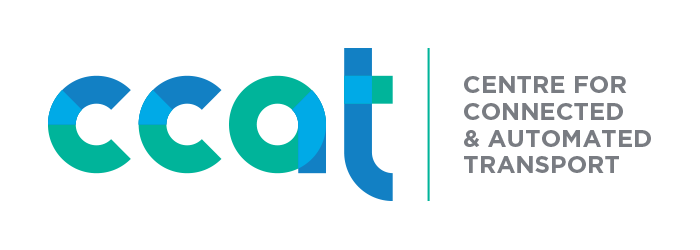
On Tuesday 16 April, CCAT hosted almost 90 stakeholders for a virtual briefing on the National Future Transport Summit.
The Summit will be held over two days in Melbourne in September 2025, bringing together government and industry leaders from across the transport system.
Stakeholders heard an update on CCAT’s planning for the Summit, including a presentation on the newly released Strategic Plan for the Summit.
The Strategic Plan has now been published which details the Vision, Mission and Objectives of the Summit:
Vision
The Summit will be a catalyst for Australia to maximise safety, sustainability and productivity outcomes in future transport, especially through connectivity and automation.
Mission
Government and industry will create a shared blueprint for connected and automated transport that ensures Australia has the right infrastructure, the means for sustainable deployment, the ability to harness productivity and safety opportunities and the requisite community acceptance.
Objectives
- Bring government and industry leaders together to agree recommendations on planning for connected and automated transport, delivering an enduring point of reference that informs government and industry decisions moving forward (key outcome of the Summit).
- Bring government and industry leaders together to agree sector-specific considerations and recommendations relevant to connected and automated transport.
- Break down broader sector silos by bringing transport sectors together and including related sectors such as energy and industry.
- Foster a national stakeholder community made up of leaders and individuals with an interest in connected and automated technologies from across transport modes and related sectors.
This Plan also highlights key details such as the Summit’s theme areas, interdependencies, format, governance and milestones.
In his opening of the Stakeholder Briefing, CCAT Chair Ian Webb highlighted that “as yet, we lack a national implementation plan for connected and automated technologies to drive progress across all sectors, from roads to ports, rail, airports, grain handlers, mining and logistics. By bringing together stakeholders from government and industry as well as the major industry associations, we have an opportunity to create a common purpose that will maximise the potential of connected and automated transport.
"This meeting is a jolt of energy to go ahead and deliver this very ambitious program.”
Executive Director Rahila David presented the Strategic Plan for the Summit and invited stakeholders to participate in the various levels of planning and policy development.
She emphasised the key distinguishing theme for the Summit is its focus on maximising the potential of connected and automated transport. She highlighted that the Summit’s focus is not on how we enable the technology, such as minimum infrastructure changes, regulation, and trials of various technologies. Rather it is about the next step; ‘harnessing the broader opportunities for Australia from this technology and maximising the potential of connected and automated transport.’
If you missed this session and/or would like to know more, contact CCAT today to arrange a discussion.
For more information visit the National Future Transport Summit webpage or contact info@ccat.org.au.

